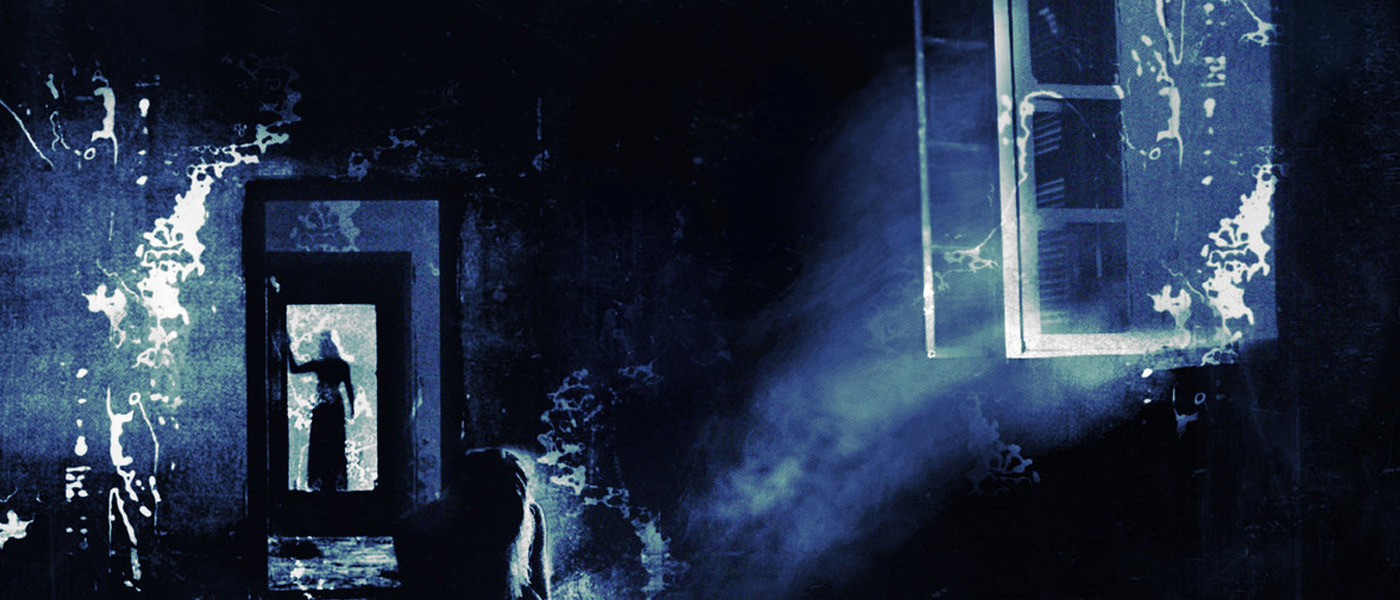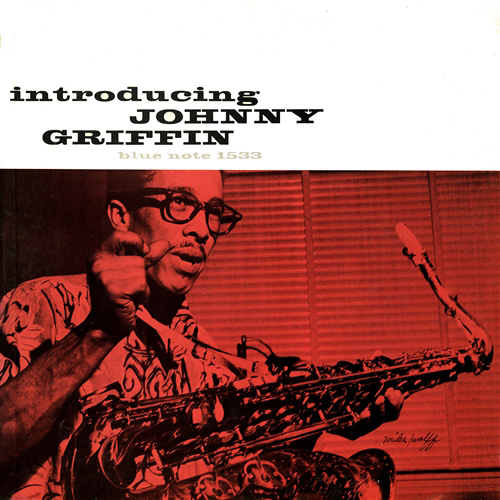
I’m not much for making New Year’s Resolutions, but, like a lot of folks, I do get an extra shot of energy when the calendar year flips. I guess I become more “resolute.” I experience a general sense of optimism, and bathe myself in the idea that I will have more stamina, more grit, more determination to make this “my year.” To not slip back into self-defeating habits. I rarely establish new goals. I just redouble my efforts to achieve the goals I’ve already set for myself. I want to have a good year, and January 1 is an excellent time to clear my mind and get a running start towards that ever-changing, diaphanous plan. There is much to get in the way, and it behooves one to enhance strengths and minimize obstacles. To go with what you know works.
In the World of Vinyl, there is one company whose products I can always trust to deliver the goods, and so we will be focusing our first installment of vinyl reviews in 2020 on five titles from the latest series by Music Matters Jazz. That’ll give our ears (at least) a running start on extracting the best out of the new decade. These five records will exhaust my MMJ reserves. If there are readers who I have fatigued through my devotion to this series, they may take heart. You likely won’t have to read about me salivating over their Blue Note magic again soon. I’ve been advised that they have another project baking in their sonic oven, but I have no details. It’ll likely be significant. They’re like the Star Wars resistance fighters. Just when you think they’ve been depleted to the point of extinction, a new dawn breaks, the saga continues, & they start mopping outer space with the competition. May the Note be with us…
Secrets Sponsor
We’ll begin with Introducing Johnny Griffin, which was my literal introduction to the man’s sound. His technique reveals a wealth of technical prowess and elegance. That’s evident from the beginning of the album opener, “Mil Dew,” through the closing notes of “Lover Man.” If we want to further the Star Wars analogy (and perhaps we should not), Griffin seems to have harnessed the power of the Emperor’s lightning hands. The deep blues in the rays and phrases, the electricity that threatens to consume its source and targets simultaneously. I’m not as familiar with the work of Charlie Parker as I will be one day, but I know the guy had the lightning. He was fast. But how much quicker could anyone be than Johnny Griffin? When he drops out on “Chicago Calling” and Wynton Kelly takes a round on the keys, you feel like you’ve been saved. Like some mysterious, dark figure managed to bottle Emperor Griffin’s power and give you a chance to reach for your saber.
There are ballads too, and this is when the listener realizes that there’s more to Griffin than speed and power. He’s no Imperial Villain at all. He’s a real man with depth and feeling. He summons textures and colors through his horn that paint scenes so peaceful and pretty they make the violence of the faster numbers seem distant and remote. In short, he creates the full continuum of the human experience through the arrangement of notes and the air between them. Sometimes there’s a little, and sometimes there’s a lot. That’s life. Introducing Johnny Griffin will get you in the arena. Keep your saber on. The guy is relentless.
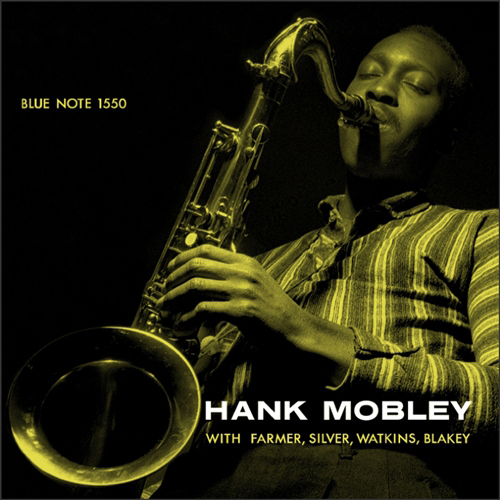
I found Hank Mobley shortly after I discovered Classic Records, which was my go-to for high-quality reissues a couple of decades ago. I think. Time flies. And waffles. And gets downright confusing at times, but I think I’ve been listening to Mobley for a little over twenty years. I love his playing. He’s not necessarily as innovative or challenging as Coltrane and Rollins can be, but he’s tasteful and strong. I’ve described his sound as “muscular” in the past, and I can’t come up with anything better right now. Which is a shame because I’m hearing him with so much more clarity and detail than I have in the past. I’m listening to the Hank Mobley Quintet record from MMJ’s SRX series, and I’m enjoying the hell out of myself. This plan is coming together…
Quintet is comprised of six Mobley originals, and his talents are on full display throughout. There are rollicking tunes with names like “Funk In Deep Freeze” and tear-jerking ballads like “Fin de L’affaire.” The latter might be my favorite on the disc. It allows the listener to focus in on and absorb all of what the players offer with some wide-open spaces to spread out in and some of the sweetest phrases ever uttered from a horn. Most of the other tunes follow a somewhat predictable formula wherein the quintet joins together for some unified themes, and then the individual players go for separate solos before improvising their way back to the group to sum things up together again. That arrangement works out well when the players are named Art Farmer, or Horace Silver, or Art damn Blakey.
But there’s a slight lack of closeness on Quintet, similar to what I noticed on Dorham’s Afro-Cuban disc. The Mobley record, especially, reveals a little more air in the studio than I’ve become accustomed to while hearing the other titles in this series. The players are still “in the room” with me, but they don’t seem to be speaking directly to me. It’s more like they’re on the other side of the party, having a conversation amongst themselves while I stand at a respectable distance and eavesdrop. It lends the event a more casual feel than the more intensely emotional trips we’ve touched on this month. It seems clear to me that this is a result of the original production though, not something that has occurred during the reissuing process. It’s just a different feel. Not necessarily better or worse, depending on your preferences as a listener.
The pressing itself is as pristine as we’ve come to expect. Here is what the folks at MMJ had to say about that: “We’ve long wanted to get our all-analog re-masters of the original Van Gelder tapes onto something quiet and revealing, something that surpassed any vinyl formula ever developed. So, for the past two years, in collaboration with Record Technology and Neotech Plastics, we’ve been working on a vinyl formula that not only matches but surpasses the quality of the quietest vinyl ever put into production… We call it ‘SRX Vinyl.’ SRX stands for ‘Silent Running Xperience.’ SRX is our proprietary formula, conceived and developed by Rick Hashimoto of Record Technology and manufactured by Neotech Plastics. Its noise floor is fathoms lower than any other vinyl we know of out there past or present. Records pressed with it look like normal black discs until you hold them up to the light and see that they are translucent and smoky, silvery gray. What matters most though, is the sound of the music. The near-perfect silence of SRX Vinyl virtually frees the music from groove noise and draws you further into the listening space, setting it in relief so distinct, full and spacious it’s nearly sculptural. You hear more of what’s on the original tapes, not only of the notes played on the instruments but the sense of the event itself. There’s a richer sense of being in the presence of human souls breathing, plucking, blowing, pressing …. Working on and out via their instruments. You hear them searching together, conjuring the music with one another, putting that beauty into the world once again, right now, right here.”
Secrets Sponsor
And that’s as good a way, to sum up, this series as I can imagine. No expense was spared, no detail too trivial to assess for improvement. The heavy gatefold sleeves are still adorned with high-def session photos, and the sounds are as intense as you might imagine. If you haven’t gotten your ears on at least a couple of these discs, your collection is suffering. They won’t be around forever, and some titles are already sold out. Don’t start a new decade with regrets at having missed out.
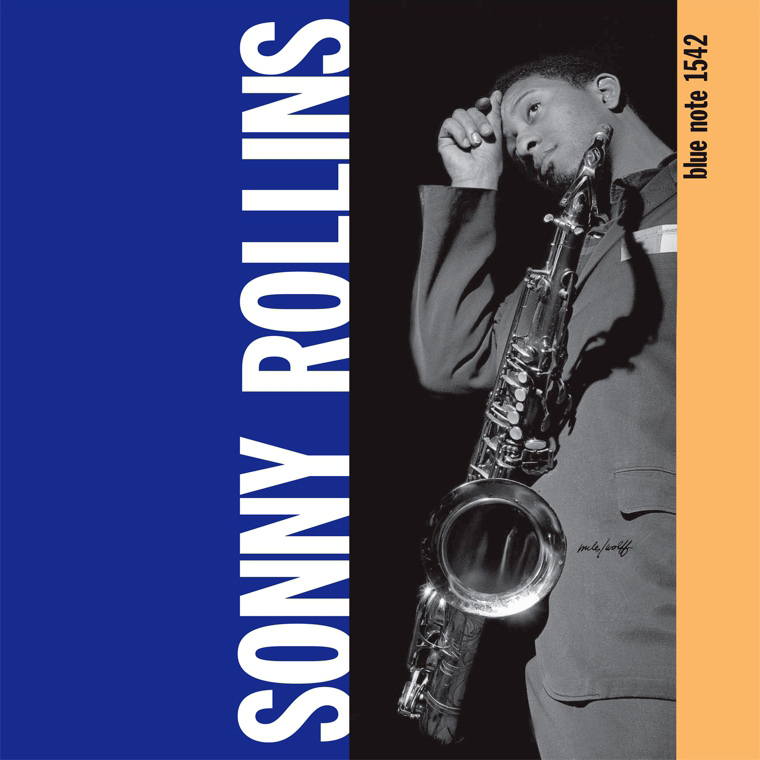
“People are not doing things as well as they can do them any more… The par of products is not high enough, and in 1959 I felt that way about my playing. The extraneous things had gotten in the way of it. I didn’t have time to practice, and I wanted to study more. I was playing before more and more people, and not being able to do my best. There was no doubt that I had to leave the scene, and it was just a matter of when I could bring it about. I’d lost the ability to play what I wanted to play every night without the interference of emotionalism. I was filled with question marks.”
Sonny Rollins said all that to a journalist from The New Yorker when he returned to live performance in November 1961. Which is remarkable because I’ve been listening to his Volume 1 record to the exclusion of most else for three months now, and I still can’t get over it. His playing is superb with devastating emotional heft and a technique that had already established him as one of the most influential saxophonists of his generation. And he recorded Vol. 1 in 1957, which was two years before he walked away from the public eye to… practice. (Insert Incredulous Iverson meme to reflect the bizarre nature of this statement here.) To practice for 15 hours daily on the Williamsburg Bridge so as to avoid upsetting his neighbors. That bridge should be renamed. Or there should at least be a plaque to commemorate the spot that he used as a laboratory to further hone his craft. But what sort of memorial could capture the weight of such history? I guess that’s what the music is for.
I’d be curious to compare the last record he made prior to the hiatus with The Bridge, which he released first upon his return. I wonder if I’d detect a difference in feeling or method. Probably not. The guy was working on a different level. Several floors above my pay grade. And I imagine that he’d be thrilled to hear the MMJ version of Vol. 1 if he hasn’t already. Because his quote from ’59 holds true today. People are not doing things as well as they could. The vinyl habit is fraught with disappointment and frustration due mostly to poor quality control as it relates to pressings, but also because of poor sourcing, cheap packaging, and a perceptible ennui from record executives who don’t seize the chance to make great recordings better.
The folks at MMJ are not burdened with such lethargy and laziness. All three of their records that we’ve explored here so far reflect everything that is consistently great about their work, in general. That is to say, they are transparent, full-sounding, perfectly balanced and pressed on immaculately quiet vinyl. (More on that in the Hank Mobley Quintet piece.) The albums also demonstrate some of Rudy Van Gelder’s most inspired work. He was a secretive sort, and guarded his techniques to the point of psychosis. I mean that figuratively. But Introducing Johnny Griffin, Adam’s Apple, and Volume 1 are some of the finest sounding discs in my collection, and I could not be more literal than that. I’m out of superlatives at this point.
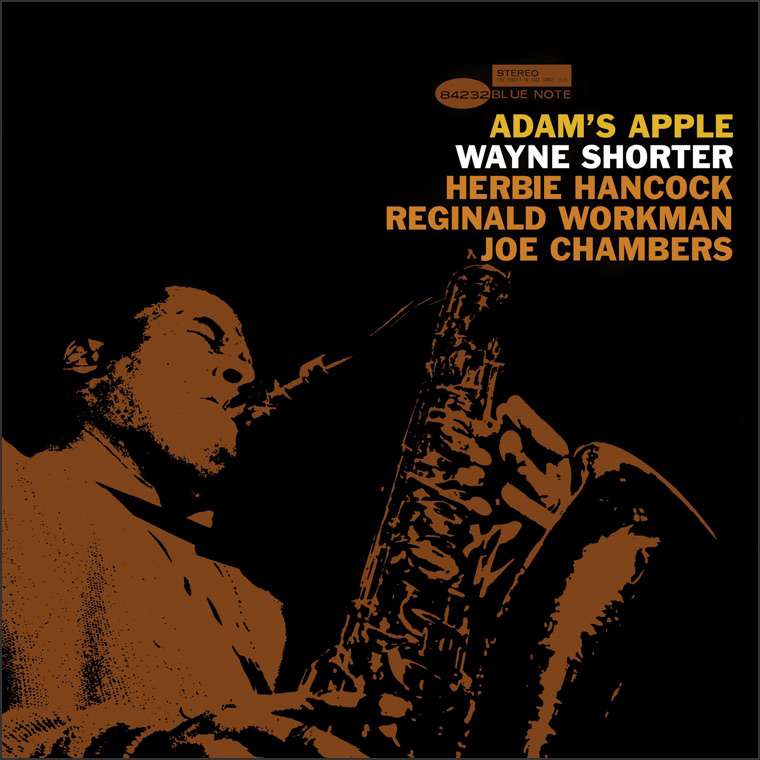
It might have been tempting in June of 1966 to tune the Future of Wayne Shorter out since he’d just unleashed Speak No Evil. That record is universally regarded as one of the finest Jazz albums produced, and surely no mortal could scale those heights a second time. Lightning, as they say, does not strike twice in the same… hell, never mind. It does. Because Adam’s Apple was released less than a year later, and it’s every bit as satisfying and strong as Evil was. Sometimes that’s how it goes. I remember thinking that George Foreman had nothing to look forward to except brain damage, embarrassment, and chicken grilled indoors when he returned to the ring in the ‘90s. No one expected him to reclaim the belt that he’d lost two decades prior. But some folks manage to dig deep and find levels of consistency and inspiration that the rest of us can’t fathom. Adam’s Apple is on that level.
It doesn’t hurt to have Herbie Hancock in your corner, either. He kicks “Adam’s Apple” off with a Charlie Brown-inflected piano figure before Shorter comes oozing into the frame with all the dynamic range of a Roman candle on New Year’s Eve. Whatever else that stuff that Shorter’s ooze is, it’s most obviously sticky and strong. Once you’re in it, you can’t get free. To resist is to sink ever deeper into its tacky residue. And it will hold you for the entire record’s run time. Shorter composed five of the six songs on Apple and his most famous of the five was “Footprints,” which he would soon record as a member of Miles Davis’s band on Miles Smiles. It’s now considered a standard. The lone cover is of a Jimmy Rowles tune called “502 Blues (Drinkin’ and Drivin’).” Even though its title seems designed to make mothers mad, it contains some of Shorter’s most lovingly rendered phrases. His tone and the timbre of his horn is revealed with such clarity and detail that it tickles you in your throat. It’s almost disorienting. You feel like you could reach out and swat the notes away, but why would anyone want to do that? Maybe it’s an impulse to interact physically with such beauty. To risk damaging the notes for the chance to experience them more fully. Like popping a soap bubble midair to pin its prisms to your skin. And after all that, the whimsy and merriment of “El Gaucho” is right around the corner. That one has a riff that will crawl into your dome and set up residence forever like a lovable roommate with a pithy catchphrase that you can’t stop repeating.
I whiffed on what was supposed to be a Shorter performance in San Francisco early last year. He couldn’t make the show, so it became a tribute to rather than a showcase for. Kamasi Washington and Terrace Martin were called in to flesh out Shorter’s band in the master’s absence. I feel sad when I think of having missed it. Shorter is a titan even when truant. If you need a reminder of that, give Adam’s Apple an active listen. You’ll find that it stands on its own next to the greats in the canon. Even Speak No Evil.
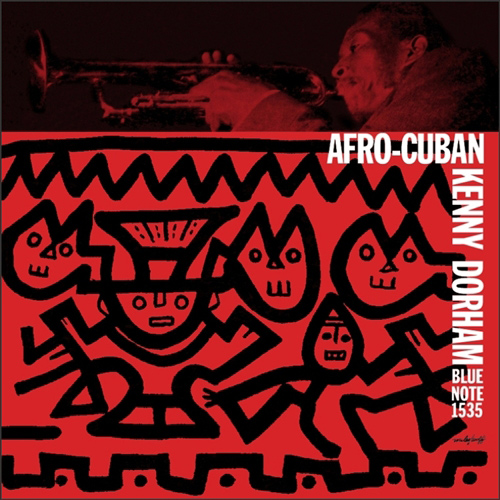
But we’re not done. We still have Kenny Dorham’s Afro-Cuban to check out.
Blue Note released Afro-Cuban as a 10-inch in late ’55. The 12-inch long-player, which we’re discussing here, came out a couple of years later with additional songs from a separate session. I’d flip my lid if MMJ did a limited run of the 10-inch version with the original artwork, but I’m not going to hold up any trains while I wait. I’m certain that the cost would be prohibitive, and they’ve already presented the songs in a sonically delightful package. The 10-inch dream is just because I’m a weirdo and I have a small collection of (mostly) cool records in that format that would benefit from the addition immensely. But that’s not my only argument for the reissue of the work in its original configuration.
The first side of the later version, as the title suggests, is comprised of songs that were written in the Afro-Cuban style. There was a time, not so long ago, when I would not have known what that meant, but the style took hold in San Francisco a few years back with such strength that one could go out almost any night of the week to enjoy live performances in the Afro-Cuban vein. But it was typically funked up. Updated for audiences geared towards black light dance parties and glow sticks. Not sure Kenny would have approved, but maybe. He certainly acquitted himself quite nicely when he took on the genre. Completely unlike anything I’ve heard from Blue Note before or since (but I’m far off from exhausting their catalog). He utilized an octet for pulling it off, and Art Blakey was behind the kit. So he had that going for him. Dorham also hired Potato Valdes to play congas on the session, and that pushed things right over the edge. If you don’t enjoy yourself while listening to Afro-Cuban, you might want to call it a day. Go back to menacing cute puppies and little old ladies. Maybe take a nap or something.
The second side uses mostly the same personnel but to far different effect. We’ve moved into the hard-charging style that the Hard Boppers were most renowned for now. And it’s cool, man. Really fun to listen to. But I prefer the smaller combos as a matter of personal taste. The sonics on both sides of Afro-Cuban is superb, but somehow the album doesn’t feel as intimate to me as Lou Donaldson’s Blues Walk, for instance. Or Sonny Rollins’s Volume 1, for that matter. Having a trio or a quartet of horns blowing simultaneously saps some of the closeness out of the room, and gives the tunes more of a West Coast flair, I think. This is especially true of the three songs on side two of the Dorham disc. The Afro-Cuban styled songs are their own thing. They kind of standoff to the side as a group to themselves. But the side two material stands out in such sharp relief in comparison that I’d probably prefer to hear them on a separate album. Or a different 10-inch. Dare to dream, y’all. It could happen.


